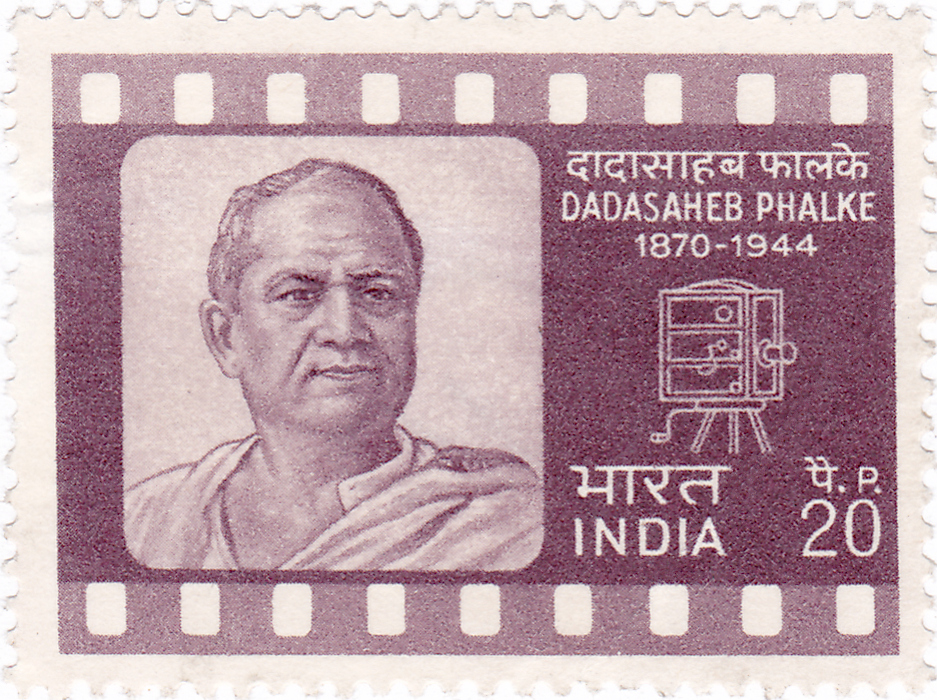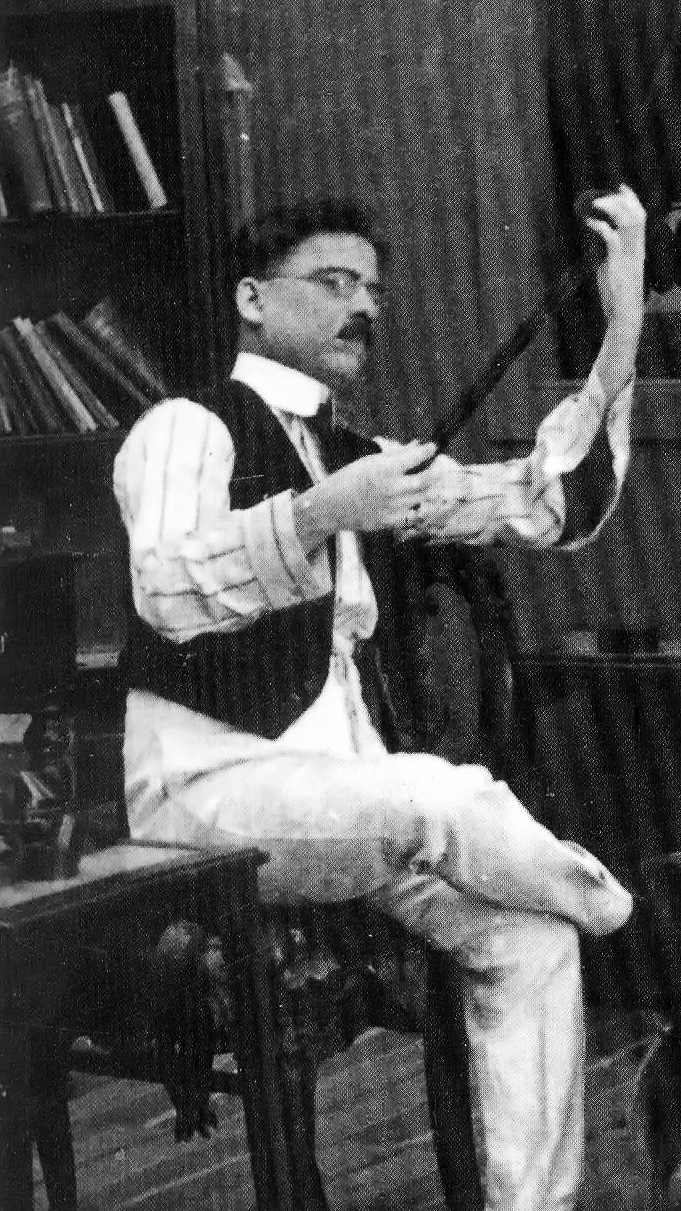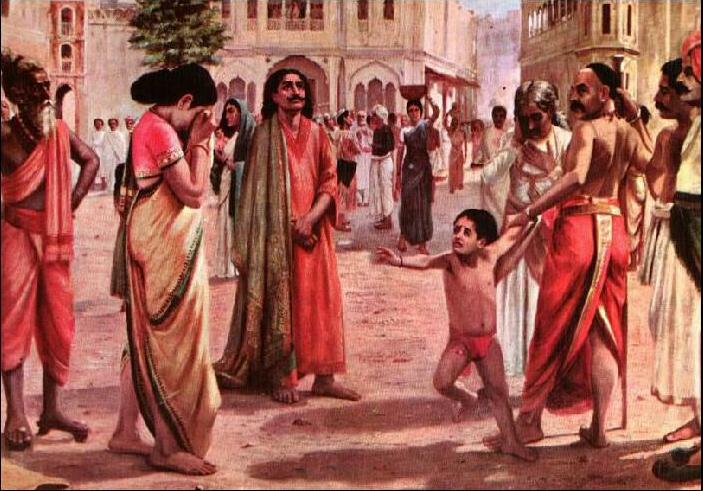|
Coronation Cinematograph And Variety Hall
Coronation Cinematograph and Variety Hall was a hall in the Girgaon area of south Mumbai, India, used for variety entertainment shows, dramas and to screen movies. The first full-length Indian feature film, ''Raja Harischandra'', was screened here, thus heralding the birth of the Cinema of India, Indian film industry. Location and ownership Coronation cinema, built in 1912 was located at Narayan chawl at the junctions of Sandhurst road and Khetwadi road in the Girgaum area of Mumbai. It was one of the so-called "Sandhurst road cinemas" of the 1910-1917 Bombay cinema era, during which this area hosted a number of cinema houses including Coronation, the American-India, the Olympia and the New Alhambra. The theatre was managed by Narayan Govind Chitre, a friend of the film maker Dadasaheb Torne. The screening of Raja Harischandra ''Further information : Raja Harischandra, Raja Harischandra (Movie)'' On 3 May 1913 in film, 1913 Raja Harishchandra (राजा हरिश्च ... [...More Info...] [...Related Items...] OR: [Wikipedia] [Google] [Baidu] |
Girgaon
Girgaon, or Girgaum, is an area in southern Mumbai in Maharashtra, India. It is near the coast. A section of Marine Drive, Mumbai, Marine Drive is located here. History Girgaon has a deep-rooted connection with the celebration of Ganesh Chaturthi, particularly due to the influence of Bal Gangadhar Tilak. In the late 19th century, Tilak transformed the festival into a large-scale public event to promote unity and nationalist sentiments against British rule. Girgaon became one of the central areas for these celebrations, with large processions and public gatherings that continue to this day. The neighborhood remains an important hub for Sarvajanik Ganeshotsav, attracting thousands of devotees and visitors each year. Culture * Girgaon Chowpatty: A renowned public beach that is a focal point for festivals, especially the immersion of Ganesh idols during Ganesh Chaturthi. Notable Buildings * Saifee Hospital * Royal Opera House (Mumbai), Royal Opera House Entertainment an ... [...More Info...] [...Related Items...] OR: [Wikipedia] [Google] [Baidu] |
Dadasaheb Phalke
Dhundiraj Govind Phalke (Pronunciation: Help:IPA/Marathi, [d̪ʱuɳɖiɾaːd͡ʒ pʰaːɭke]), popularly known as Dadasaheb Phalke (30 April 1870 – 16 February 1944), was an Indian producer-director-screenwriter, known as "the Father of Indian cinema". His debut film, ''Raja Harishchandra'', was the first Indian movie released in 1913, and is now known as India's first full-length mythological feature film. He made 94 feature-length films and 27 short films in his career, spanning 19 years until 1937, including his most noted works: ''Mohini Bhasmasur'' (1913), ''Satyavan Savitri'' (1914), ''Lanka Dahan'' (1917), ''Shri Krishna Janma'' (1918) and ''Kaliya Mardan'' (1919). In his honour, the Dadasaheb Phalke Award was instituted as highest honorary award under the National Film Awards by the Government of India. Early life and education Dhundiraj Phalke was born on 30 April 1870 at Trimbak, Bombay Presidency into a Marathi language, Marathi-speaking Chitpavan Brahmin family. H ... [...More Info...] [...Related Items...] OR: [Wikipedia] [Google] [Baidu] |
Hindi Cinema
Hindi cinema, popularly known as Bollywood and formerly as Bombay cinema, is primarily produced in Mumbai. The popular term Bollywood is a portmanteau of "Bombay" (former name of Mumbai) and "Cinema of the United States, Hollywood". The industry, producing films in the Hindi language, is a part of the larger Indian cinema industry, which also includes Cinema of South India, South Indian cinema and other smaller Cinema of India#Cinema by language, film industries. The term 'Bollywood', often mistakenly used to refer to Indian cinema as a whole, only refers to Hindi-language films, with Indian cinema being an umbrella term that includes all the Cinema of India#Cinema by language, film industries in the country, each offering films in diverse languages and styles. In 2017, Indian cinema produced 1,986 feature films, of which the largest number, 364, have been in Hindi. In 2022, Hindi cinema represented 33% of box office revenue, followed by Telugu cinema, Telugu and Tamil cine ... [...More Info...] [...Related Items...] OR: [Wikipedia] [Google] [Baidu] |
Event Venues Established In 1912
Event may refer to: Gatherings of people * Ceremony, an event of ritual significance, performed on a special occasion * Convention (meeting), a gathering of individuals engaged in some common interest * Event management, the organization of events * Festival, an event that celebrates some unique aspect of a community * Happening, a type of artistic performance * Media event, an event created for publicity * Party, a social, recreational or corporate events held * Sporting event, at which athletic competition takes place * Virtual event, a gathering of individuals within a virtual environment Science, technology, and mathematics * Event (computing), a software message indicating that something has happened, such as a keystroke or mouse click * Event (philosophy), an object in time, or an instantiation of a property in an object * Event (probability theory), a set of outcomes to which a probability is assigned * Event (relativity), a point in space at an instant in time, i.e. a ... [...More Info...] [...Related Items...] OR: [Wikipedia] [Google] [Baidu] |
1912 Establishments In India
Year 191 ( CXCI) was a common year starting on Friday of the Julian calendar. At the time, it was known as the Year of the Consulship of Apronianus and Bradua (or, less frequently, year 944 ''Ab urbe condita''). The denomination 191 for this year has been used since the early medieval period, when the Anno Domini calendar era became the prevalent method in Europe for naming years. Events By place Parthia * King Vologases IV of Parthia dies after a 44-year reign, and is succeeded by his son Vologases V. China * A coalition of Chinese warlords from the east of Hangu Pass launches a punitive campaign against the warlord Dong Zhuo, who seized control of the central government in 189, and held the figurehead Emperor Xian hostage. After suffering some defeats against the coalition forces, Dong Zhuo forcefully relocates the imperial capital from Luoyang to Chang'an. Before leaving, Dong Zhuo orders his troops to loot the tombs of the Han emperors, and then destroy Lu ... [...More Info...] [...Related Items...] OR: [Wikipedia] [Google] [Baidu] |
Pundlik
Pundalik () or Pundarika (), () was an Indian saint and a devotee of the Hindu deity Vithoba. Vithoba is a Vaishnava deity, considered a reincarnation of Vishnu and Krishna. Pundalik is believed to have brought Vithoba to Pandharpur, where the deity's main shrine stands today. He is also regarded as the historical founder of the Varkari sect, which is centered on the worship of Vithoba. Pundalik was one of the earliest practitioners of Kundalini Yoga. As he was considered a master of Kundalini Yoga, people used to call him "Kundalik." Over time, the name evolved into "Pundalik," symbolising Kundalini energy in the form of Vitthala (also known as Panduranga). Vitthala of Pandharpur is regarded as an incarnation of Vishnu or Krishna. According to legends, Vitthala also represents the symbol of Kundalini energy. However, in Hinduism, this energy is believed to spiritually reside within all beings. The brick on which Vitthala stands represents the '' Muladhara Chakra'', the f ... [...More Info...] [...Related Items...] OR: [Wikipedia] [Google] [Baidu] |
Mahabharata
The ''Mahābhārata'' ( ; , , ) is one of the two major Sanskrit Indian epic poetry, epics of ancient India revered as Smriti texts in Hinduism, the other being the ''Ramayana, Rāmāyaṇa''. It narrates the events and aftermath of the Kurukshetra War, a war of succession between two groups of princely cousins, the Kauravas and the Pandava, Pāṇḍavas. It also contains Hindu philosophy, philosophical and devotional material, such as a discussion of the four "goals of life" or ''puruṣārtha'' (12.161). Among the principal works and stories in the ''Mahābhārata'' are the ''Bhagavad Gita'', the story of Damayanti, the story of Shakuntala, the story of Pururava and Urvashi, the story of Savitri and Satyavan, the story of Kacha (sage), Kacha and Devayani, the story of Rishyasringa and an Ramopakhyana, abbreviated version of the ''Rāmāyaṇa'', often considered as works in their own right. Traditionally, the authorship of the ''Mahābhārata'' is attributed to Vyasa, Vy ... [...More Info...] [...Related Items...] OR: [Wikipedia] [Google] [Baidu] |
Ramayana
The ''Ramayana'' (; ), also known as ''Valmiki Ramayana'', as traditionally attributed to Valmiki, is a smriti text (also described as a Sanskrit literature, Sanskrit Indian epic poetry, epic) from ancient India, one of the two important epics of Hinduism known as the ''Itihasas'', the other being the ''Mahabharata''. The epic narrates the life of Rama, the seventh ''avatar'' of the Hindu deity Vishnu, who is a prince of Ayodhya (Ramayana), Ayodhya in the kingdom of Kosala. The epic follows Exile of Lord Rama, his fourteen-year exile to the forest urged by his father King Dasharatha, on the request of Rama's stepmother Kaikeyi; his travels across the forests in the Indian subcontinent with his wife Sita and brother Lakshmana; the kidnapping of Sita by Ravana, the king of Lanka, that resulted in bloodbath; and Rama's eventual return to Ayodhya (Ramayana), Ayodhya along with Sita to be crowned as a king amidst jubilation and celebration. Scholarly estimates for the earliest stage ... [...More Info...] [...Related Items...] OR: [Wikipedia] [Google] [Baidu] |
Harishchandra
Harishchandra () is a legendary king of the Solar dynasty, who appears in several legends in texts such as the ''Aitareya Brahmana'', ''Mahabharata'', the ''Markandeya Purana'', and the ''Devi-Bhagavata Purana, Devi Bhagavata Purana''. The most famous of these stories is the one mentioned in the ''Markandeya Purana''. According to this legend, Harishchandra gave away his kingdom, sold his family, and agreed to be a slave – all to fulfill a promise he had made to the sage Vishwamitra, Vishvamitra. Legend Aitareya Brahmana According to a legend mentioned in ''Aitareya Brahamana'', Harishchandra had one hundred wives, but no son. On advice of the sage Narada, he prayed to the deity Varuna for a son. Varuna granted the boon, in exchange for an assurance that Harishchandra would make a sacrifice to Varuna in the future. As a result of this boon, a son named Rohita (or Rohitashva) was born to the king. After his birth, Varuna came to Harishchandra and demanded that the child be ... [...More Info...] [...Related Items...] OR: [Wikipedia] [Google] [Baidu] |
Indian Film
The cinema of India, consisting of motion pictures made by the Indian film industry, has had a large effect on world cinema since the second half of the 20th century. Indian cinema is made up of various film industries, each focused on producing films in a specific language, such as Hindi, Telugu, Tamil, Malayalam, Kannada, Bengali, Marathi, Gujarati, Punjabi, Bhojpuri, Assamese, Odia and others. Major centres of film production across the country include Mumbai, Hyderabad, Chennai, Kolkata, Kochi, Bengaluru, Bhubaneswar-Cuttack, and Guwahati. For a number of years, the Indian film industry has ranked first in the world in terms of annual film output. In 2022, Indian cinema earned ($1.9 billion) at the box-office. Ramoji Film City located in Hyderabad is certified by the Guinness World Records as the largest film studio complex in the world measuring over 1,666 acres (674 ha). Indian cinema is composed of multilingual and multi-ethnic film art. The term 'Bolly ... [...More Info...] [...Related Items...] OR: [Wikipedia] [Google] [Baidu] |
Mumbai
Mumbai ( ; ), also known as Bombay ( ; its official name until 1995), is the capital city of the Indian state of Maharashtra. Mumbai is the financial capital and the most populous city proper of India with an estimated population of 12.5 million (1.25 crore). Mumbai is the centre of the Mumbai Metropolitan Region, the seventh-most populous metropolitan area in the world with a population of over 23 million (2.3 crore). Mumbai lies on the Konkan coast on the west coast of India and has a deep natural harbour. In 2008, Mumbai was named an alpha world city. Mumbai has the highest number of billionaires out of any city in Asia. The seven islands that constitute Mumbai were earlier home to communities of Marathi language-speaking Koli people. For centuries, the seven islands of Bombay were under the control of successive indigenous rulers before being ceded to the Portuguese Empire, and subsequently to the East India Company in 1661, as part of ... [...More Info...] [...Related Items...] OR: [Wikipedia] [Google] [Baidu] |
Raja Harishchandra
''Raja Harishchandra'' () is a 1913 Indian silent film directed and produced by Dadasaheb Phalke. It is often considered the first full-length Indian feature film. ''Raja Harishchandra'' features Dattatraya Damodar Dabke, Anna Salunke, Bhalchandra Phalke and Gajanan Vasudev Sane. It is based on the legend of Harishchandra, with Dabke portraying the title character. The film, being silent, had English, Marathi, and Hindi-language intertitles. Phalke decided to make a feature film after watching '' The Life of Christ'' (1906) at a theatre in Bombay in April 1911. In February 1912, he went to London for two weeks to learn filmmaking techniques and upon return founded Phalke Films Company. He imported the hardware required for filmmaking and exhibition from England, France, Germany, and the United States. Phalke shot a short film ''Ankurachi Wadh'' (''Growth of a Pea Plant'') to attract investors for his venture. He published advertisements in various newspapers calling for the ... [...More Info...] [...Related Items...] OR: [Wikipedia] [Google] [Baidu] |





